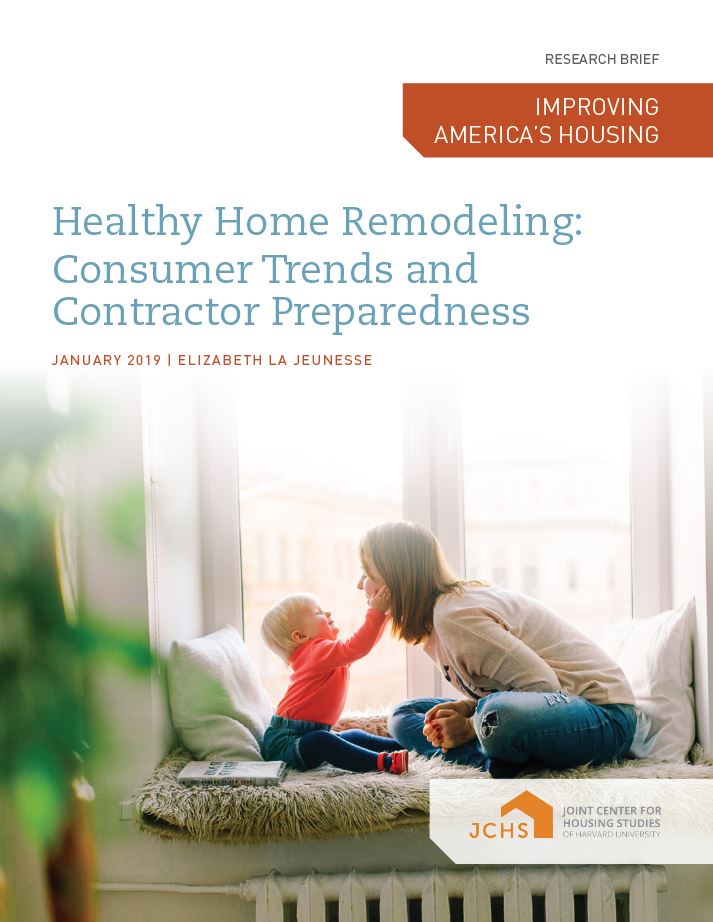Healthy Home Remodeling: Consumer Trends and Contractor Preparedness
Consumer concerns over potential health impacts of household products and the built environment are by no means new, yet in recent years interest in this topic has grown rapidly. Illustratively, as of this year web searches on Google for the term “non-toxic” marginally outpaced even those for the term “energy efficient”. Many terms relating directly to common household and building products are often searched for in combination with “non-toxic”: paint, flooring, sealants/glues, and carpeting. Heightened concerns over how to curate a “healthy home” environment are also evident in recent actions of major household product dealers, such as Target and Amazon, to restrict or phase out certain “chemicals of concern” in many household products, such as those related to cleaning and personal care, in response to concerns over insufficient federal government regulations.
The purpose of this paper is to explore recent trends in “healthy housing” as they specifically relate to the nation’s $400 billion home improvement and repair industry. First, we examine what U.S. consumers are saying about “healthy housing” concerns in relationship to the need for home improvement and repairs, and how these concerns have trended in recent years. Consumer perceptions and actions are explored by a variety of demographic characteristics, including household age, tenure and education. Second, this paper explores how and the extent to which remodeling contractors are adapting and responding to consumer demand for healthy home projects. Remodeling contractors’ preparedness to handle consumers’ changing demands in this area will be examined, along with common barriers and benefits to participation in this niche of the remodeling market.
A major finding of this paper is that while consumer interest in “healthy home remodeling” is on the rise, and the remodeling trades’ awareness of this shift is growing rapidly, this market niche is overall still in the early stages of its growth. Many remodeling contractors are not yet heavily engaged in this market, and only a small portion are pursuing healthy home remodeling as a clear strategic objective. To be sure, there are certain “healthier” products, such as low-VOC paints and formaldehyde-free woods, that are becoming standard in the industry. Yet overall industry engagement in this area remains muted, particularly in comparison with other popular remodeling market niches such as energy efficiency and sustainability.
On the positive side, there remain considerable opportunities for future growth on the horizon: strong interest on the part of younger consumers, particularly those with children, as well as the rise of home automation products and services, are both likely to help propel the market for healthy home remodeling forward in the coming years. At the same time, however, considerable barriers exist to contractor engagement. Pricing is a top concern, along with the fact that healthy home projects often require specialized training and knowledge. In the current context of minimal government regulations and incentives promoting healthy housing objectives, industry adoption of “healthy home” objectives and techniques is expected to progress slowly but steadily over time.

